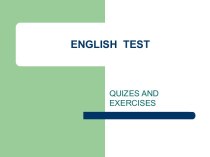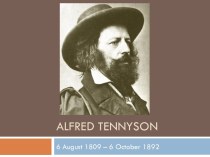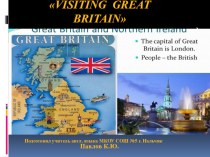- Главная
- Разное
- Бизнес и предпринимательство
- Образование
- Развлечения
- Государство
- Спорт
- Графика
- Культурология
- Еда и кулинария
- Лингвистика
- Религиоведение
- Черчение
- Физкультура
- ИЗО
- Психология
- Социология
- Английский язык
- Астрономия
- Алгебра
- Биология
- География
- Геометрия
- Детские презентации
- Информатика
- История
- Литература
- Маркетинг
- Математика
- Медицина
- Менеджмент
- Музыка
- МХК
- Немецкий язык
- ОБЖ
- Обществознание
- Окружающий мир
- Педагогика
- Русский язык
- Технология
- Физика
- Философия
- Химия
- Шаблоны, картинки для презентаций
- Экология
- Экономика
- Юриспруденция
Что такое findslide.org?
FindSlide.org - это сайт презентаций, докладов, шаблонов в формате PowerPoint.
Обратная связь
Email: Нажмите что бы посмотреть
Презентация на тему по английскому языку на тему Достопримечательности Англии
Содержание
"London Eye"The London Eye (the English name of the London Eye) is one of the largest Ferris wheel in the world, which is located on the South Bank of the River Thames in the London Borough
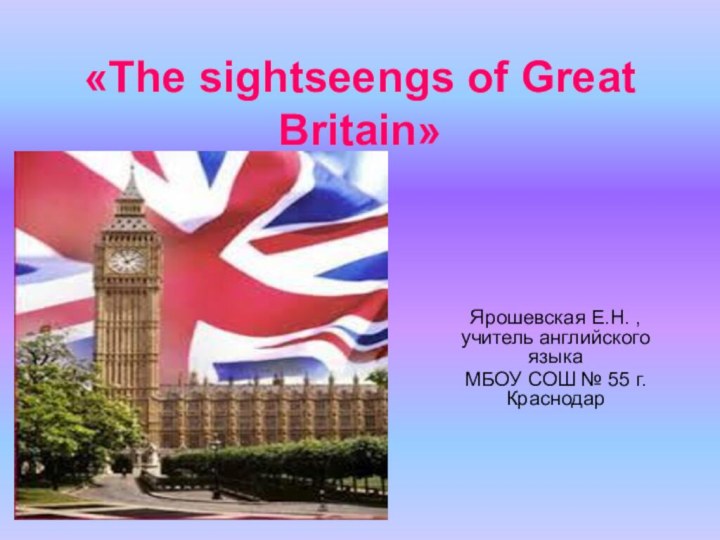
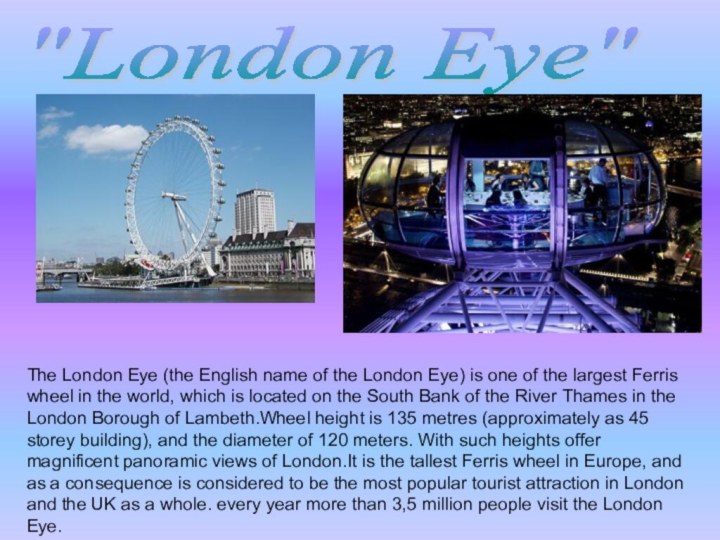
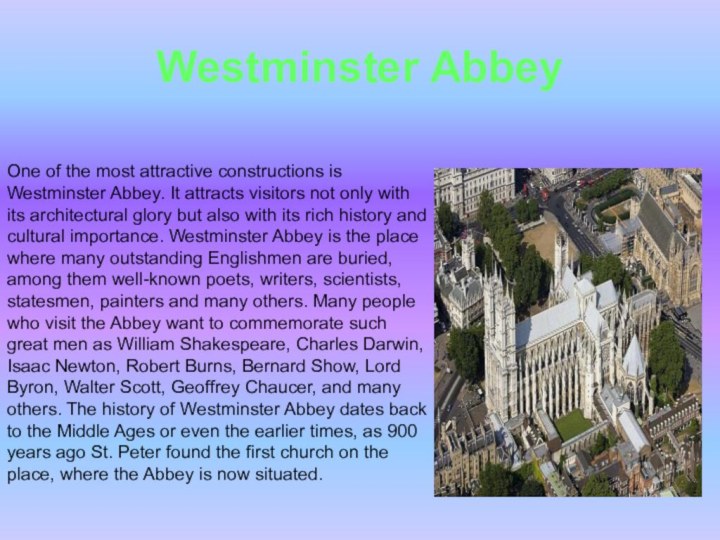
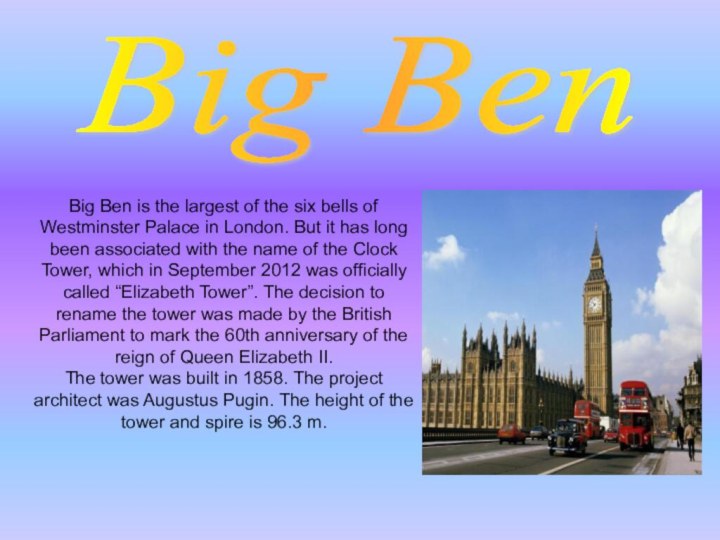
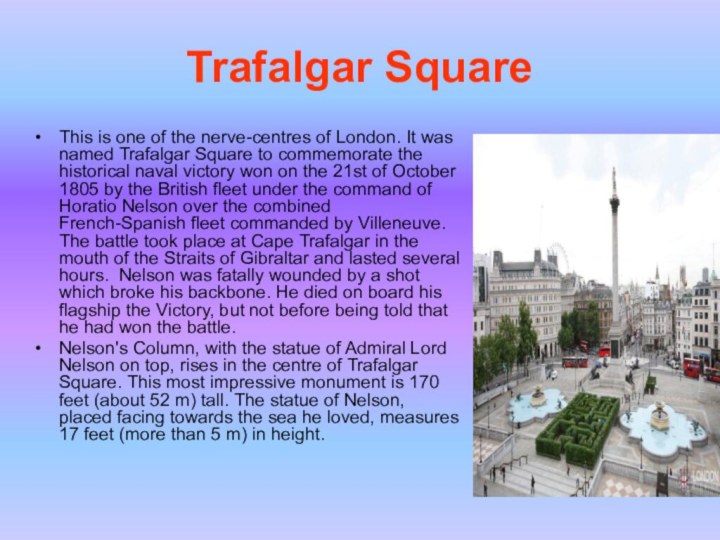
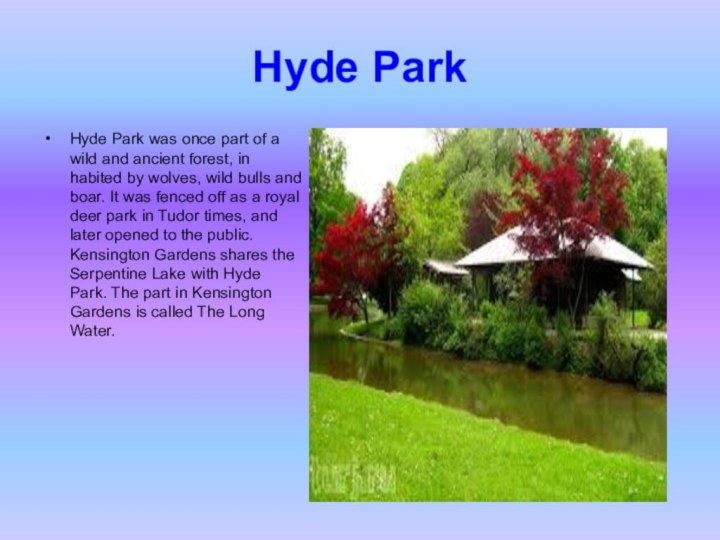
Слайд 3
Westminster Abbey
One of the most attractive constructions is
Westminster Abbey. It attracts visitors not only with its
architectural glory but also with its rich history and cultural importance. Westminster Abbey is the place where many outstanding Englishmen are buried, among them well-known poets, writers, scientists, statesmen, painters and many others. Many people who visit the Abbey want to commemorate such great men as William Shakespeare, Charles Darwin, Isaac Newton, Robert Burns, Bernard Show, Lord Byron, Walter Scott, Geoffrey Chaucer, and many others. The history of Westminster Abbey dates back to the Middle Ages or even the earlier times, as 900 years ago St. Peter found the first church on the place, where the Abbey is now situated.
Слайд 4
Big Ben
Big Ben is the largest of the
six bells of Westminster Palace in London. But it
has long been associated with the name of the Clock Tower, which in September 2012 was officially called “Elizabeth Tower”. The decision to rename the tower was made by the British Parliament to mark the 60th anniversary of the reign of Queen Elizabeth II.The tower was built in 1858. The project architect was Augustus Pugin. The height of the tower and spire is 96.3 m.
Слайд 5
Trafalgar Square
This is one of the nerve-centres of
London. It was named Trafalgar Square to commemorate the
historical naval victory won on the 21st of October 1805 by the British fleet under the command of Horatio Nelson over the combined French-Spanish fleet commanded by Villeneuve. The battle took place at Cape Trafalgar in the mouth of the Straits of Gibraltar and lasted several hours. Nelson was fatally wounded by a shot which broke his backbone. He died on board his flagship the Victory, but not before being told that he had won the battle.Nelson's Column, with the statue of Admiral Lord Nelson on top, rises in the centre of Trafalgar Square. This most impressive monument is 170 feet (about 52 m) tall. The statue of Nelson, placed facing towards the sea he loved, measures 17 feet (more than 5 m) in height.

